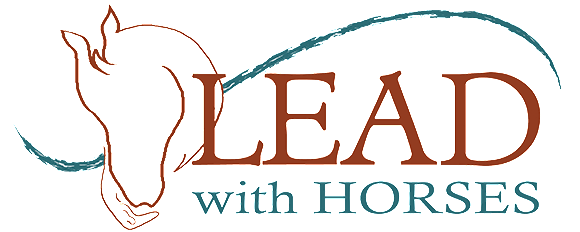What do horses, our surroundings, our bodies and senses, and a 2,500-year-old practice all have in common? What can we learn from them collectively if we are seeking to experience joy, happiness, wellness, and in between, be eager to seek more?
Here’s a helpful hint. Research into the treatment of depression, anxiety, and the effects of childhood trauma is showing that – despite the medications, treatment modalities, protocols, and theories – it is the ancient practice of mindful meditation, breathwork, and full awareness of our body’s response to our surroundings that could actually achieve greater healing and relief from these maladies of the mind and body. There is plenty of research into how horses connect and communicate through their breath. Horses will breathe slower and deeper to regulate either their own anxiety or that of another herd member.
In observing our clients and healing herd at LEAD with Horses, we have seen that humans can also be calmed by simply paying attention to a horse’s breathing pattern and then matching it with their own breath. Because horses are fully self-aware and finely attuned with their surroundings, our clients tend to follow suit. We see its efficacy in helping our kiddos regulate their own anxiety or unhealthy responses when they are activated, even though memory of experience is retained at a non-conscious level. What’s really amazing in all this is that both horses and humans already have the tools necessary to be fully present and connected in the moment and, therefore, the ability to heal.
So, when we talk about being body-aware and mindful of the present and our surroundings, what we are saying is that we are purposefully connecting to what’s going on in our non-conscious mind and raising it into our conscious mind. And this is where being “in the presence of horses” is supportive because shedding light on what’s been kept hidden in the dark for so long is a frightening prospect.
Horses, for the sake of their own survival, are naturally and fully mindful of and present with their surroundings and themselves. Mithros, the wise elder of our herd, would likely have this to say:
We horses have an amazing ability to be fully present in our 4 footed bodies, in our environment, as well as in the moment. This is absolutely necessary because we would be easy pickings for predators if we weren’t. When a threat shows up you humans get all wound up and you obsess over it. But horses? Yeah, we get scared, BUT! We have the ability to take stock of the situation and return to the present once we see there’s no real danger. You humans can learn a lot about being present just by watching us and by practicing a few, simple exercises to center yourself on your own 2 feet.
Ashley Belt, who is our Equine Specialist, explains, “Horses use their breath to relieve stress and ground themselves. If you’ve ever heard a horse blow out or sneeze there’s a good chance that they are grounding themselves. In our program we have a variety of deep breathing exercises that clients can use. One of which is a horse breath where a client relaxes their lips, takes a deep breath in then exhales through the mouth making a raspberry noise just like horses. Other options include several different shapes where clients are encouraged to draw the shapes on the horse to engage all the senses. You can watch the physical changes in the horse when this happens: their  head lowers, the eyes soften and sometimes close, a back foot will rest on the ground.”
head lowers, the eyes soften and sometimes close, a back foot will rest on the ground.”
At LEAD with Horses, we provide our kids well-researched tasks that involve breathing, listening, sensing, relaxing, and paying attention to their bodies to help in understanding the connection between their own breathing, thoughts, and emotions, and how they abide with their families, at school, and in their community.
In all the work I have had the honor to conduct with youth in my career I have never before experienced moments of beauty in silent connectedness, breath by breath, sense upon sense, between a teenager and the horse that held space in the midst of loving kindness. LSH
We invite you to contact us and share a chat with our staff and volunteers. We are passionate about our work and tending to our Healing Herd. In our tending, we are, indeed, attended to.
Box Breathing
Here’s a great breathing exercise for you to try on your own. It’s called Box Breathing and it has been adopted by the Navy SEALS for use when they recognize their own need to ground themselves and be mindfully aware of their environment.
Take a deep, full breath. Exhale slowly, fully and completely. Inhale again and count from 1 to 4 (or for as long as feels comfortable). Pause for 4 seconds. Exhale slowly while counting from 1 to 4 (or for as long as feels comfortable). Pause for 4 seconds. Repeat the exercise three or four times. It helps to place both your hands on your sternum, pressing slightly in and downward while practicing this technique.
For more information:
Meditate in the presence of horses. https://fullcirclewellness.uk/Meditate_with_Horses.html
What Horses can Teach us About Breathing Mindfully https://equineguidedgrowth.com/2018/12/01/what-horses-can-teach-us-about-breathing-mindfully/
The Body Keeps the Score https://www.besselvanderkolk.com/resources/the-body-keeps-the-score



